In the subway, there are many signals and signs that you must recognise for safe and efficient operation. Failure to respect them could result in delays and inconvenience for the passengers.
Ultimately, there are safeguard devices which prevent most serious accidents from happening for all possible combination of failures.
| Any red traffic light requires ultimate stop of train and will trigger emergency brakes in the train mechanically upon passing it. Disabling the relevant safety mechanisms is strictly forbidden and will result in unconditional termination of the drivers license. |
Track signals are used to regulate train traffic and ensure safety of all trains and their relative motion. Take time to memorize the signals and their meanings.
Constant signals
Signalling
| One red light: Stop! Driving through is prohibited.
|

|
| One yellow, one red light: Stop! Driving through is prohibited.
|
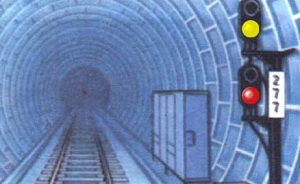
|
| One red light, "OP" ("ОП"): Tracks and dead ends are terminated with one red light and a "ОП" (опасность/opasnost, danger) sign. Do not cross under any circumstances!
|
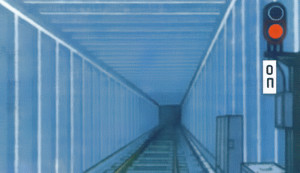
|
| One flashing red light, "DOP" ("ДОП"): "ДОП" (добавочный опасность/dobavochnyy opasnost) means "additional danger". This indicates that there is a temporary change to the track configuration which should be treated as a dead end. For example, if a track switch is in the wrong position as you approach a merging junction, as it would derail the train when passing over it.
|

|
| One red light, one flashing white light: Train is invited to proceed through the red light, no faster than 20 km/h. Train must stop at the next obstacle. The dispatcher must be notified before train starts moving and after it passes the white light.
|

|
| One red light, one white square light: Train is invited to proceed through the red light, no faster than 20 km/h. Train must stop at the next obstacle. The dispatcher must be notified before train starts moving and after it passes the white light.
|

|
| One green light: Driving is permitted with the current speed limit.
|

|
| One yellow light: Driving is permitted, next signal is red. Proceed at reduced speed and expect to stop.
|

|
| One yellow, one green light: Driving is permitted with reduced speed, no faster than 60 km/h. Next yellow light must be crossed at no more than 35 km/h.
|
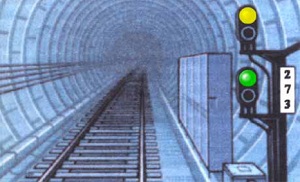
|
| One blue light: Driving is permitted according to ALS-ARS indications. If ALS indicator displays 0, ERR/NOS, or flashing ERR and 0 then the train is forbidden to cross it.
|

|
| One flashing yellow light, one yellow light: Driving to alternate track is permitted. Next signal is yellow or green.
|
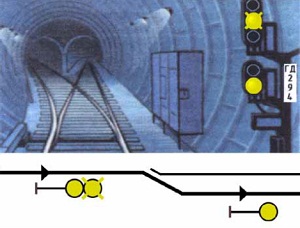
|
| Two yellow lights: Driving to alternate track is permitted. Next signal is red.
|
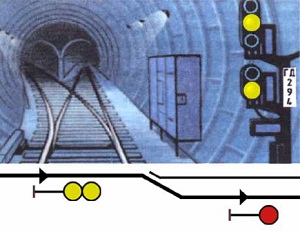
|
| Repeater: Repeat all signals from main.
|

|
| Reserved.
|
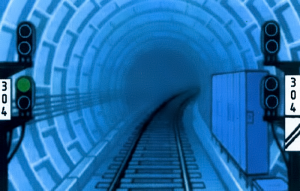
|
| Inactive.
|
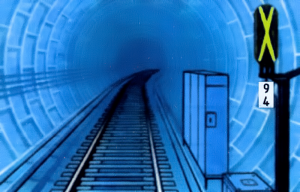
|
Signals on closed type stations
| One square white light if station doors are closed, and two round white lights if space between train and wall are empty.
|

|
Handheld signals
| One red light: Stop! Driving through is prohibited.
|
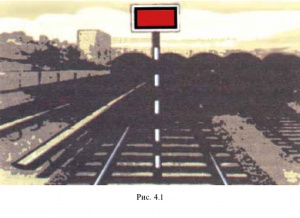
|
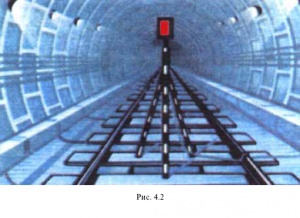
|
| One yellow light: Driving is permitted with reduced speed, no faster than speed specified in warning, if no warning - not faster than 20km/h.
|
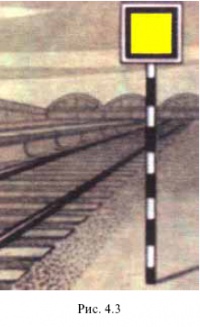
|
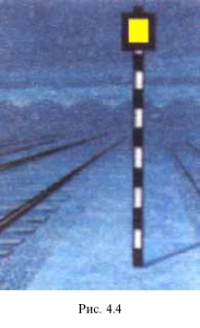
|
| One green light: All train passed dangerous place.
|
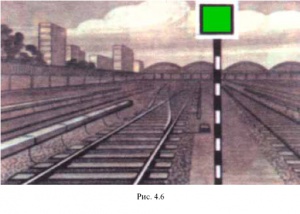
|
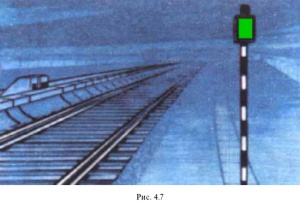
|
| "Halt! Contact rail under voltage!"
|
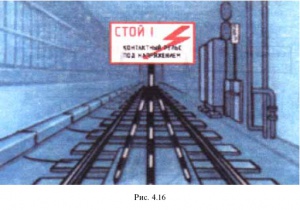
|
Hand signals
Signal indicator and signs
| Red signal with KGU (КГУ): Outsized
|
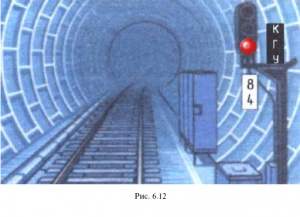
|
| Max speed in km/h.
|
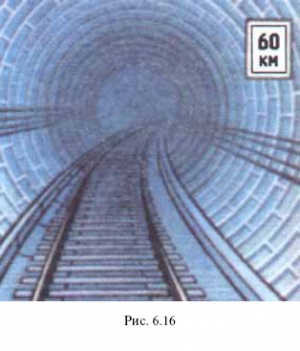
|
| T Sbor (Т Сбор): Start assemble brake circuit.
|

|
| S (С): Signal
|
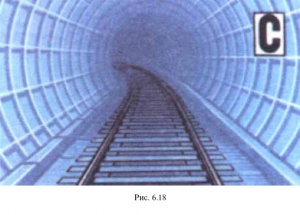
|
| Turn on engines.
|
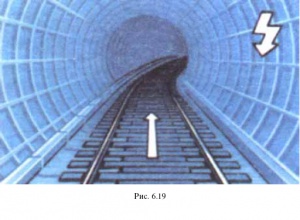
|
| Turn off engines.
|
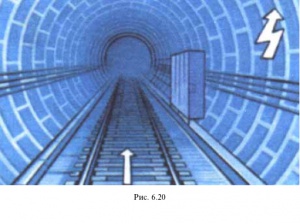
|




























